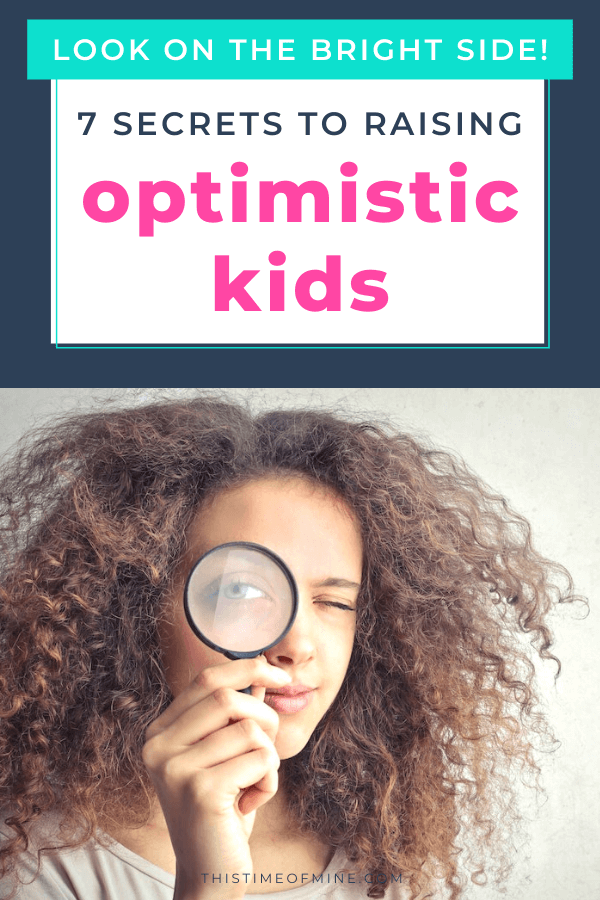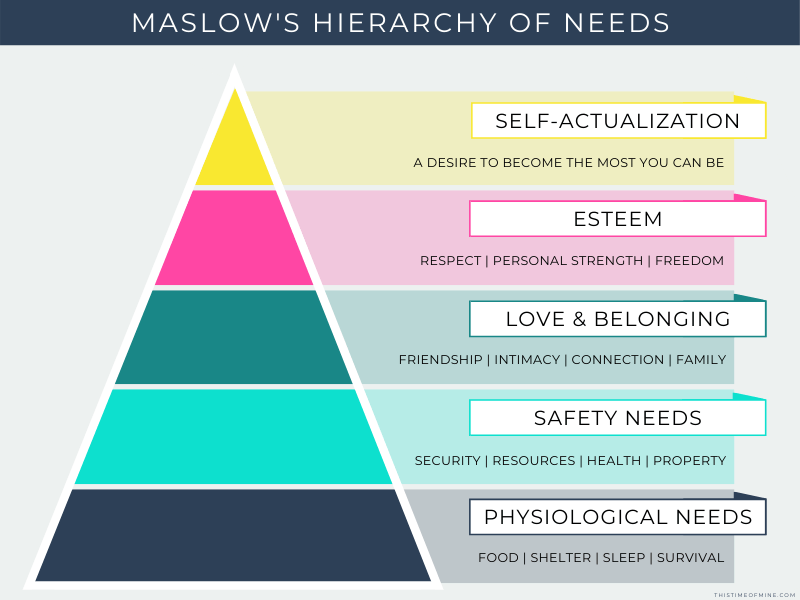Look On The Bright Side: 7 Secrets To Raising Optimistic Kids
Help your kids learn to cope with anything! Learn the secrets to raising resilient, optimistic kids who can bounce back when things get tough.

“I can’t do it!” “It’s not fair!”
As parents, we hear phrases like these all the time. And often, we’re left wondering why our kids are so dramatic. But life is filled with stress, disappointment and change – and even our youngest kids can be affected by the pressure of it all.
Think about it: our kids are learning and growing every day. And much of what they experience is new and unfamiliar.
For example, in the course of just one day, your child might learn a new math concept, get ignored by a friend, have a sock slip out of place, start a new activity, and then come home only to find out that dinner is something they’ve never heard of.
Some kids are able to cope better than others, but learning to stay optimistic is a muscle all of us need to strengthen. Even adults have a hard time moving through difficulty and setbacks. Sure, we can handle quite a bit, but for the most part, we like it better when things come easily.
Our kids are no different. They’re still gaining life experience, and are often at the mercy of those around them when it comes to interpreting their world. As their parents, we can use that privilege to shape their ability to stay positive. To see a way forward when things get hard.
How do we do this? How can we help our kids remain optimistic so they can cope with life’s challenges (big and small) in a healthy way?
7 SECRETS TO RAISING OPTIMISTIC KIDS

Research suggests that there are a handful of things parents can do to help their kids grow up with a healthy “can-do” attitude. Here are 7 of them. They are science-backed traits optimists have in common and are the ones I’m focusing on the most in my parenting.
This post contains affiliate links. For more information, see my disclosures here.
1. OPTIMISTS UNDERSTAND THEY DON’T ALWAYS HAVE TO FIND A SILVER LINING
This first secret sounds totally counter-intuitive, I know. But hear me out.
When our kids feel down, our first instinct is to cheer them up, right? But this isn’t always the best choice. In fact, not allowing them to sit in their hard feelings momentarily can actually do more harm than good.
Toxic positivity is a term that describes a way of thinking in which happiness is the only choice. Here are a few examples:
- “It’s not that big of a deal, you’re overreacting.”
- “What’s done is done. Time to move on.”
- “Stop worrying so much.”
- “Oh, it’s fine.”
Pediatric Psychologist, Dr. Sarah Hornack explains it this way. “Encouraging children to be positive in the face of difficulties can send the inappropriate message that feeling down or anxious is abnormal”.
She goes on to say, “There is research to suggest that individuals who overemphasize the importance of happiness end up associating their negative feelings with failure, and spend more time focusing on these negative emotional experiences.”
This can lead to secondary emotions such as being angry about feeling sad or afraid. Fear or sadness about being angry. Or even feeling afraid to approach us as parents for fear of our reaction, thinking we expect “good vibes only”.
I don’t know about you, but that’s the last thing I want for my kids.
So no. There doesn’t always have to be a silver lining. We don’t have to put a positive spin on everything.
Of course, we want to help our kids get back to feeling more optimistic. But sometimes, the best way to do that is to allow them to sit in their hard feelings for a moment. We can simply be their emotional support until they’re ready to move on.
2. OPTIMISTS DEVELOP A POSITIVE VOCABULARY
In his book, Hardwiring Happiness, Dr. Rick Hanson explains that our brains are naturally wired to place a greater emphasis on the negative. He also says that “just a handful of painful experiences of futility can rapidly become a sense of helplessness”.
It’s no wonder phrases like “I can’t” or “I hate this” come so easily to our kids! So how can we change that?
With practice. Over time, you can train your children’s brains to give the good parts equal weight by doing a few things.
First, give them new words. When your kids accomplish something, experience something good, or just feel happy, teach them how to describe it. They might not naturally have the words to describe these emotions, and expanding their vocabulary might be just what they need.
You can also help them to notice when they’re complaining. It’s very easy to complain (adults included!), and sometimes, kids don’t even realize they’re doing it. But rather than saying something like “oh, stop complaining” or “you’re always so negative”, help them focus on what they have control over.
For example, if your child says they hate winter because it’s so cold, you might help them think of things they like about winter such as hot chocolate, ice skating, warm blankets, etc.
One more way you can help your kids develop a more positive vocabulary is to look for the good in the world together and talk about it.
3. OPTIMISTS KNOW HOW TO LOOK FOR THE GOOD
Mr. Rogers once said that when he was a boy and would see scary things on the news, his mother would say to him, “ Look for the helpers. You will always find people who are helping”.
In other words: There is always good to be found, we just have to look for it.
Right now, my kids are disappointed with the way the school year is going. It’s 2020 and they can’t be in school full-time with their friends. So as a family, we’ve been actively looking for good things in the world around us as well as things we’ve been able to do together that we normally wouldn’t be able to.
Optimism is a muscle, and it requires repetitive effort to stay strong.
We can help our kids by pointing out things like nature’s beauty, the kindness we see in people, alternatives when plans don’t work, and other things that might normally be hard to see when they’re feeling down.
After awhile, they’ll get better at noticing the good on their own.

4. OPTIMISTS ARE HELPERS
Service is a reliable mood-booster and is one of the best ways to get our minds off of ourselves. But it’s not always easy for kids to initiate – especially when they’re feeling down.
We can help our kids become natural helpers by providing a good example for them to follow. We can also teach them to notice others and to look for everyday opportunities to help. Here are a few ideas:
- Doing chores
- Working on projects as a family
- Serving in the community
- Performing random acts of kindness
- Practicing gratitude
For more ways to help kids learn to be helpful and kind, head to this post where you’ll also find a free Kindness Challenge that turns helping into a fun game:
5. OPTIMISTS KNOW WHAT THEY’RE CAPABLE OF
A few years ago, I read Mindset by Dr. Carol Dweck, and it completely changed my outlook on growth and potential. In the book, she explores the differences between growth mindset and fixed mindset, and how the way we think directly determines our ability to improve.
Growth mindset is now something I actively teach my children because I know how it affects their ability to remain optimistic.
Rebecca Louik from Big Life Journal explains it this way: “A willingness to confront challenges, a passion for learning, and viewing failure as a springboard for growth are all characteristics associated with a growth mindset. Not surprisingly, this type of mindset is strongly linked to greater happiness and achievement in life”.
In other words, if we want our kids to be more optimistic, they need to know they are capable of raising the bar of what they can achieve. It’s within their control.
And if they do fail at something, it will be okay because they’ll know they can bounce back.
6. OPTIMISTS HAVE THEIR NEEDS MET
FACT: It’s easier for kids to be optimistic when they feel good.
According to Maslow’s Hierarchy Of Needs, we all have needs that drive our behavior. And in order to fulfill the higher, more meaningful needs such as security and inner potential, we must first meet our lower-level needs.

So to help our kids in their journey toward being more optimistic, we can’t overlook their most basic needs: eating, sleeping, and moving their bodies.
The second thing we can do is fill their emotional cups through meaningful interactions. This type of connection, no matter how brief, helps our kids grow in confidence and resilience. It also builds their sense of security.
Tina Bryson and Dan Siegel, authors of The Power Of Showing Up teach this using the 4 S’s. Dr. Bryson says, “When children feel safe, seen (being known and understood), and soothed (being helped to feel calm and good again) most of the time (not perfectly), they develop security (where their brain wires to expect that people will see their needs and show up for them).”
Dr. Siegel goes on to say, “Happiness is a skill you can develop, not just a function of your temperament or circumstance”.
I love using this approach as a parent, because it helps me know that I don’t have to be perfect to be a positive influence for my children’s inner happiness. It also helps me understand that happiness and optimism can grow in anyone.
7. OPTIMISTIC KIDS HAVE OPTIMISTIC PARENTS
Kids are naturally pretty optimistic. But they need continued guidance from us to stay on that path.
When we complain constantly, over-dramatize stories, dwell on the negative, and give in to our own failures, we’re sending the wrong message to our kids. But when we actively try to remain positive (in a healthy way) and set a clear example of kindness in our lives, our impact can be profound.
Our kids are always watching, whether we realize it or not. But like Dr. Bryson says, it’s about being reliable, not perfect.
The more we aim to see the bright side, the easier and more natural it will become. And it doesn’t take much for our positive behavior to start rubbing off on our kids, raising their ability to be optimistic too.

RAISING OPTIMISTIC KIDS IN A PESSIMISTIC WORLD
Now, more than ever, our kids need to learn how to bounce back from setbacks. Especially with all the uncertainty and change we have experienced in the year 2020.
And as parents, one of the greatest things we can teach our kids is to find happiness in any situation.
That’s not to say they won’t experience disappointment, stress, and other big emotions. Of course they will.
But they will have the required skills to find a way past difficulty – and that’s much more powerful than being able to avoid difficulty altogether.
So to recap, here are the 7 secrets to raising optimistic kids. Optimists:
- …Understand they don’t always have to find a silver lining.
- …Develop a positive vocabulary.
- …Know how to look for the good.
- …Are helpers.
- …Know what they’re capable of.
- …Have their needs met.
- …Have optimistic parents.
And if you’re looking for more ways to help your kids, then you’ll love the free Goal Planning For Kids Parent’s Starter Guide. In it, you’ll find a printable goal ladder for kids along with what you can start doing right away to boost their confidence and get them excited about goals.
How do you help your kids look on the bright side?
OTHER HELPFUL POSTS:
- From Helpless To Hopeful: How To Raise Resilient Kids
- 30 Little Ways To Set A Good Example For Your Kids
- Simple Ways To Help Your Child Feel Absolutely Loved
- How To Turn A No Into A Yes (And Still Set Clear Boundaries)
want to remember this?
PIN IT TO YOUR FAVORITE BOARD
Share this article:




